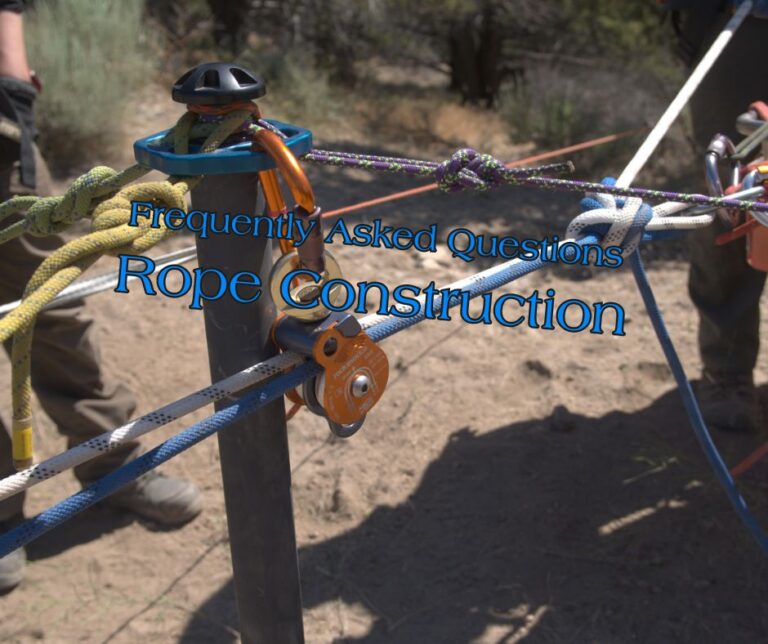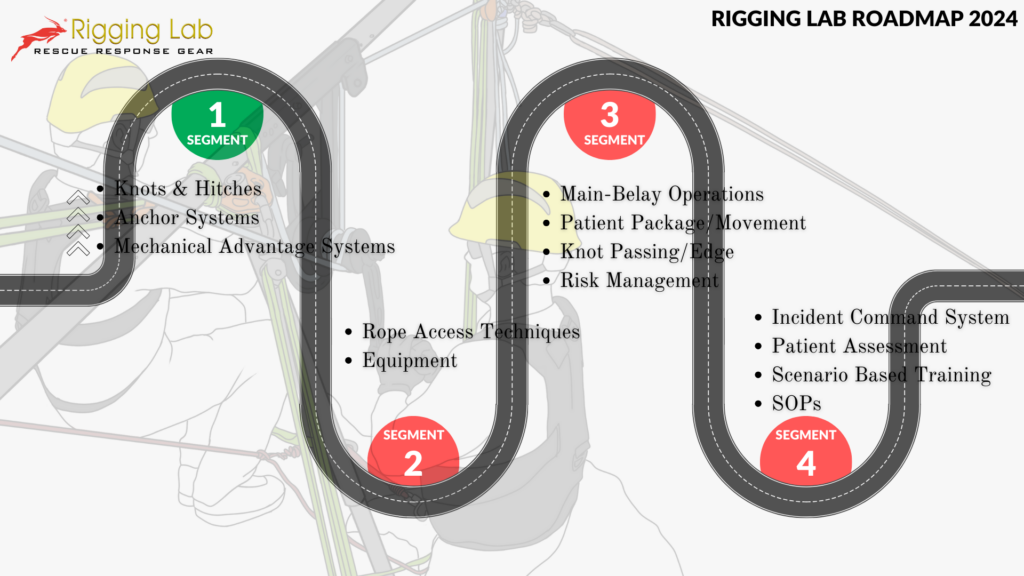In rescue operations, selecting the right type of rope is paramount for ensuring safety and efficiency. Kernmantle ropes, characterized by their nylon core and protective sheath, vary in composition to suit different environments, including those requiring resistance to high heat or sharp edges. Understanding the distinctions between static, low-stretch, and dynamic ropes is crucial, as each offers varying degrees of elasticity tailored to specific rescue scenarios. Additionally, the choice between materials like polyester, nylon, and aramid affects a rope’s stretch, strength, and durability. This guide aims to navigate the complexities of rescue rope selection, highlighting key considerations such as rope diameter, material properties, and the significance of arc-flash and di-electric ratings in maintaining operational integrity and safety.
Q: What is kernmantle rope?
Kernmantle rope is a type of rope that consists of an inner core of nylon fibers, wrapped in an outer sheath of nylon and/or polyester. Some kernmantle rope is designed for use in high heat or aggressive edge environments, and has an outer sheath made from a blend of aramid fibers such as Technora.
Q: What is the difference between static, low-stretch, and Dynamic rope?
Static rope is designed to have very little stretch, making it ideal for applications where minimal movement is desired. Dynamic rope, on the other hand, is designed to stretch more, making it ideal for climbing and other activities where shock absorption is important. Low stretch rope falls somewhere in between static and dynamic rope in terms of elongation. As a general rule, static rope may stretch up to 6% when pulled to 10% of the MBS (minimum breaking strength), while low stretch rope may stretch between 6% and 10% at 10% of the MBS. Dynamic rope is generally considered to be sport climbing rope and is usually graded by the number of falls.
Q: What is the difference between polyester, nylon, and aramid rope construction?
As a general rule, polyester ropes have less stretch than nylon ropes and are more water resistant. However, nylon ropes are said to be somewhat more elastic, which makes them less likely to break under high tension. For this reason, polyester is often the preferred choice for applications like highline rigging, where minimal stretch is essential. However, because polyester rope has such low elongation, caution must be taken when using conventional rescue belay systems.
Aramid ropes are made from synthetic fibers that offer high strength and low stretch. They are often used in applications where minimal stretch is critical, such as rock climbing. Aramid ropes are also heat resistant, making them a good choice for use in industrial applications.
Aramid rope, such as Technora and Kevlar, is much more heat-resistant than nylon and polyester blends. The maximum working temperature of nylon and polyester blends is around 250° Fahrenheit, while the working temperature of Technora rope is about 350° Fahrenheit. Technora rope is a common choice for firefighter bailout kits and other applications where high heat resistance is required.
Q: Which rope diameter is better for rescue, ½ inch or 7/16 inch?
When choosing a rope for industrial rescue applications, rope diameter is an important consideration. A rope with a diameter of ½ inch (12.7mm) is widely used by industrial rescue teams. However, many experienced rope access and rescue practitioners prefer a rope with a diameter of 7/16 inch (11mm) for advanced rigging and knot work. This is because a rope with a smaller diameter has a more manageable feel and is easier to knot.
The rope diameter and material is an important factor in rope strength. The higher the rope’s diameter, the stronger the rope will be. Today’s cordage manufacturing industry, combined with the increased awareness of true safety margins and rigging physics, has made it possible to create rope with a 10:1 safety margin. This means that a rope made of 7/16 inch rope can support two people without breaking. For those rescue teams that are not totally comfortable with technician level rigging skills, using a rope with a diameter of ½ inch may offer more comfort in meeting their basic rescue needs.
Q: Is there a rope manufactured that is arc-flash rated and/or di-electric rated?
There are two main types of rope that are used in arc flash and di-electric applications: arc-flash rated rope and di-electric rated rope. Both types of rope have different benefits and drawbacks that need to be considered when choosing the right type of rope for the job.
Arc-flash rated rope is designed to withstand the high temperatures and quick events associated with arc flash incidents. This type of rope is heavily regulated by OSHA 1910.335 and NFPA 70E, and must meet stringent arc-flash testing criteria. Arc-flash rated rope is typically made from aramid fibers such as Technora or Kevlar, which have excellent arc-flash resistance.
The standard for de-electric testing is ASTM F1701. Di-electric rating typically refers to electrical tools that are non-conductive. Di-electric test are only performed on new and/or extremely clean tools – this includes rope. Although non-contaminated (clean) nylon and polyester fibers are not conductive, to our knowledge, there are no kernmantle ropes (preferred by most rescue teams) that are certified to be di-electric. This is due to the potential of micro amounts of dirt, grime, and moisture working its way into the core of the rope which becomes hard to inspect for electrical current.
If you are using arc flash rated tools, it is important to also use arc flash rated rope. This type of rope is specifically designed to resist arc flash and will not ignite like normal rope. Di-electric rated rope is another option, but these ropes are not commonly used in rescue operations due to the lack of certification.
Most di-electric rope used by the power industries is some form of braid on braid or hollow core construction that does not meet NFPA 1983-2000 for life safety rescue rope. It should be noted that these braided ropes are still exceedingly strong but they can have compatibility issues with much of the rescue hardware on today’s market. Selected and highly training high voltage maintenance crews throughout North America are practicing rope access on live-line high voltage systems and using static kernmantle rope. However, it should be pointed out that their extreme diligence to inspection and cleanliness is paramount to the safety of this system. Static kernmantle ropes used for arc flash rated applications must meet the guidelines put forth in NFPA 1983-2000. These ropes are constructed of materials that will not break down or deteriorate when exposed to the extreme heat and energy of an arc flash event. NFPA 1983-2000 also requires that arc flash rated ropes be tested to withstand the rigors of an arc flash event without failure. Only arc flash rated ropes that have passed these stringent tests should be considered for use in high voltage applications.
Q: What does the term “handle” mean when considering rope?
One of the key factors to consider when choosing a rope is how easy it is to handle. This is often referred to as the rope’s “handle” or “knotability.” A rope with a good handle will be supple and easy to tie, while a rope with a poor handle can feel like you’re wrestling with a section of steel cable. When rope handling is important to you, be sure to choose a rope that will give you the results you’re looking for.
YOUR PERSONAL AND TEAM RESCUE AND RIGGING LEARNING CENTER
Peace on your Days
Lance










